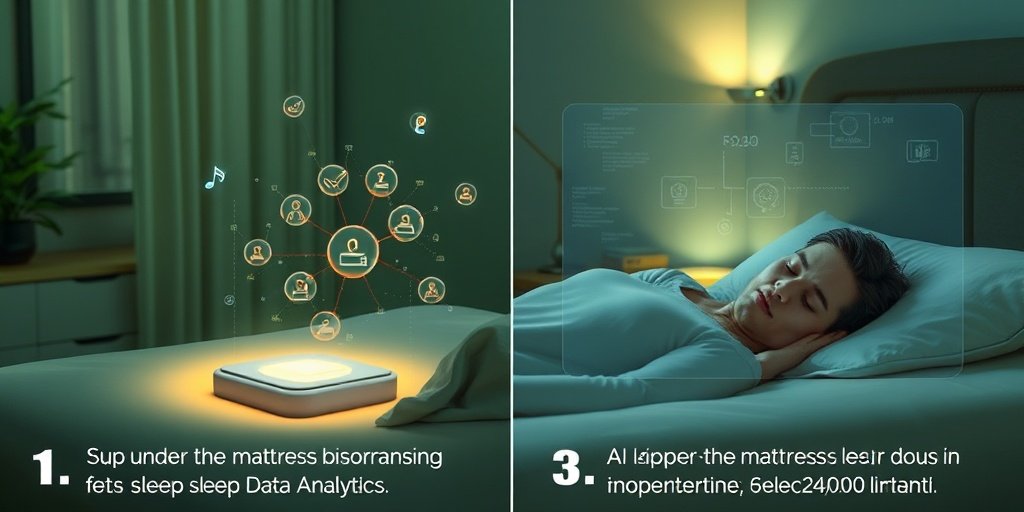⚡ Quick Summary
This review article explores the evolution of sleep apnea detection, highlighting the transition from traditional polysomnography (PSG) to innovative under-the-mattress biosensing devices. These advancements suggest that such devices could serve as cost-effective and user-friendly alternatives for detecting sleep apnea.
🔍 Key Details
- 📊 Studies Reviewed: 15 studies on under-the-mattress biosensing devices
- 🧩 Technologies Assessed: Load Cells, Emfit, PVDF, advanced radar, and machine learning
- ⚙️ Traditional Method: Polysomnography (PSG)
- 🏆 Performance Metrics: Good overall performance compared to PSG, with variability across devices
🔑 Key Takeaways
- 💡 Innovative Sensors: Various sensor technologies have shown promise in accurately detecting sleep apnea events.
- 🏥 User-Friendly: Under-the-mattress devices are less obtrusive and easier to use than traditional methods.
- 📈 Cost-Effective: These devices may offer a more affordable solution for sleep apnea detection.
- 🤖 AI Integration: Advanced machine learning methods enhance the accuracy of sleep apnea detection.
- 🌍 Clinical and Home Use: These devices are suitable for both clinical settings and home monitoring.
- 🔍 Research Scope: The review included literature from PubMed, Embase, Web of Science, and Scopus.
- 📅 Publication: The study was published in the journal Sleep Breath in 2025.

📚 Background
Sleep apnea is a serious condition that can lead to various health complications if left undiagnosed. Traditionally, it has been diagnosed using polysomnography (PSG), a method that, while effective, is often costly, time-consuming, and obtrusive. The need for more accessible and less invasive detection methods has spurred research into alternative technologies.
🗒️ Study
The review conducted by Daneshvar et al. aimed to assess the efficacy of under-the-mattress biosensing devices as alternatives to traditional PSG. By analyzing 15 studies, the authors highlighted the advancements in sensor technologies and their potential to transform sleep apnea detection.
📈 Results
The findings indicated that most studies reported good overall performance of mattress-based systems when compared to traditional PSG. However, there was some variability across devices, suggesting that while promising, further refinement and standardization may be necessary.
🌍 Impact and Implications
The implications of this research are significant. The development of under-the-mattress biosensing devices could lead to a paradigm shift in how sleep apnea is diagnosed and monitored. By providing a less intrusive and more accessible option, these devices could improve patient compliance and outcomes, making sleep apnea detection more widely available.
🔮 Conclusion
This review underscores the potential of innovative biosensing technologies in the realm of sleep apnea detection. As these devices continue to evolve, they may offer a viable alternative to traditional methods, paving the way for enhanced patient care and monitoring. Continued research and development in this area are essential to fully realize their capabilities.
💬 Your comments
What are your thoughts on the shift towards under-the-mattress biosensing devices for sleep apnea detection? We would love to hear your insights! 💬 Leave your comments below or connect with us on social media:
Tracing the evolution in sleep apnea detection: a review from traditional non-contact under-the-mattress devices to advanced AI-driven methods.
Abstract
BACKGROUND: Sleep apnea is traditionally diagnosed with polysomnography (PSG), which, while effective, is costly, time-consuming, and obtrusive. Recent advancements in biosensing technologies have facilitated the development of under-the-mattress devices as potential alternatives for detecting sleep apnea.
METHODS: We reviewed the literature across PubMed, Embase, Web of Science, and Scopus, focusing on studies that assessed mattress-like or under-the-mattress biosensing devices for sleep apnea. 15 studies were included as illustrative examples of recent progress.
RESULTS: Our review assessed studies on innovative sensor technologies for sleep apnea detection. These studies demonstrated the efficacy of various sensors-such as Load Cells, Emfit, and PVDF-along with advanced radar and machine learning methods, in accurately identifying sleep apnea events. Results indicated that most studies reported good overall performance of mattress-based systems compared to traditional polysomnography, though variability across devices was observed.
CONCLUSION: Under-the-mattress biosensing devices appear to be promising as cost-effective, user-friendly, and unobtrusive alternatives to PSG for sleep apnea detection. Their high-performance metrics suggest that these devices are viable options for both clinical settings and home use.
Author: [‘Daneshvar S’, ‘Rahimi M’, ‘Ansarin K’]
Journal: Sleep Breath
Citation: Daneshvar S, et al. Tracing the evolution in sleep apnea detection: a review from traditional non-contact under-the-mattress devices to advanced AI-driven methods. Tracing the evolution in sleep apnea detection: a review from traditional non-contact under-the-mattress devices to advanced AI-driven methods. 2025; 29:332. doi: 10.1007/s11325-025-03500-2